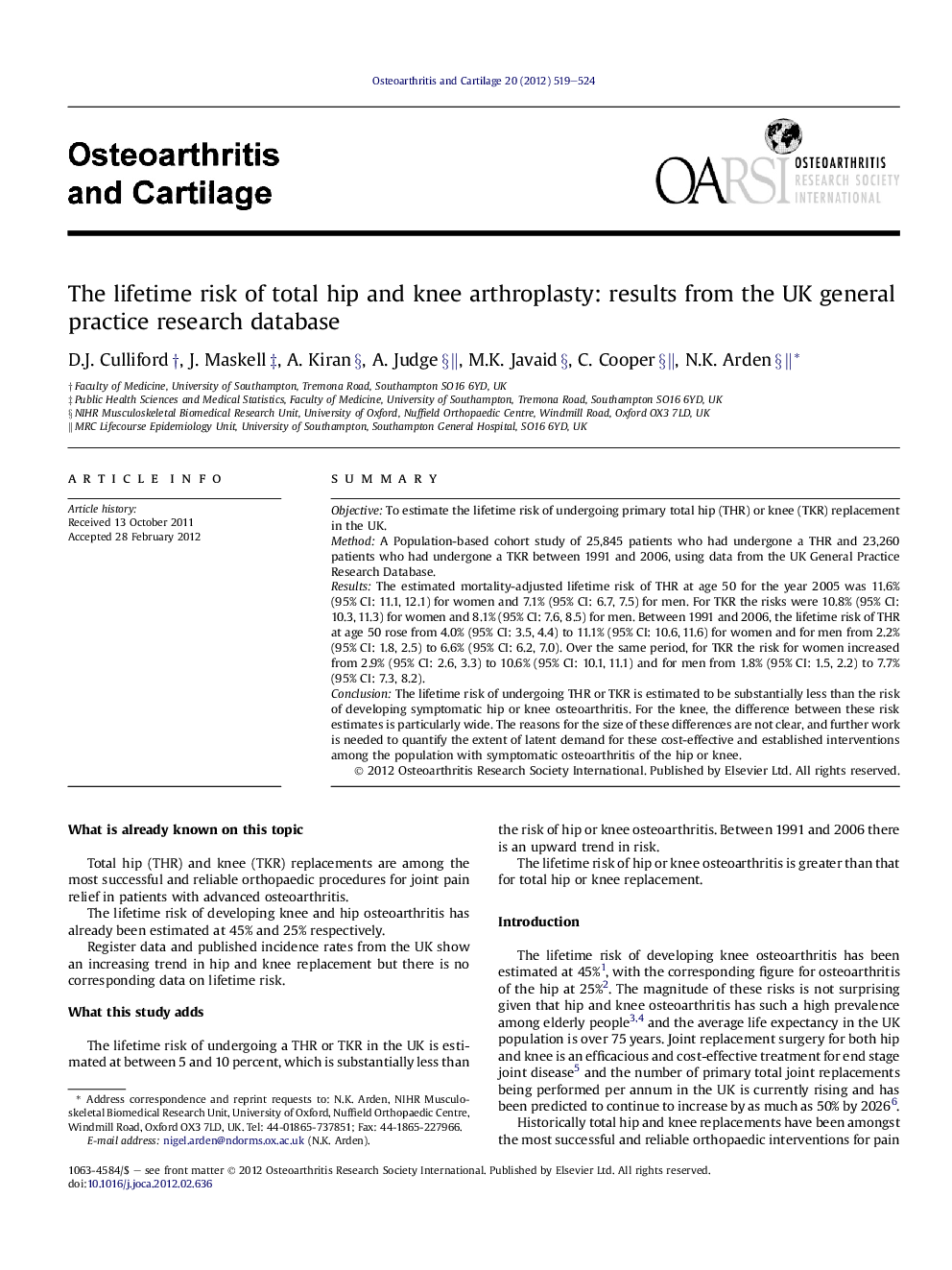| کد مقاله | کد نشریه | سال انتشار | مقاله انگلیسی | نسخه تمام متن |
|---|---|---|---|---|
| 3379960 | 1220188 | 2012 | 6 صفحه PDF | دانلود رایگان |

SummaryObjectiveTo estimate the lifetime risk of undergoing primary total hip (THR) or knee (TKR) replacement in the UK.MethodA Population-based cohort study of 25,845 patients who had undergone a THR and 23,260 patients who had undergone a TKR between 1991 and 2006, using data from the UK General Practice Research Database.ResultsThe estimated mortality-adjusted lifetime risk of THR at age 50 for the year 2005 was 11.6% (95% CI: 11.1, 12.1) for women and 7.1% (95% CI: 6.7, 7.5) for men. For TKR the risks were 10.8% (95% CI: 10.3, 11.3) for women and 8.1% (95% CI: 7.6, 8.5) for men. Between 1991 and 2006, the lifetime risk of THR at age 50 rose from 4.0% (95% CI: 3.5, 4.4) to 11.1% (95% CI: 10.6, 11.6) for women and for men from 2.2% (95% CI: 1.8, 2.5) to 6.6% (95% CI: 6.2, 7.0). Over the same period, for TKR the risk for women increased from 2.9% (95% CI: 2.6, 3.3) to 10.6% (95% CI: 10.1, 11.1) and for men from 1.8% (95% CI: 1.5, 2.2) to 7.7% (95% CI: 7.3, 8.2).ConclusionThe lifetime risk of undergoing THR or TKR is estimated to be substantially less than the risk of developing symptomatic hip or knee osteoarthritis. For the knee, the difference between these risk estimates is particularly wide. The reasons for the size of these differences are not clear, and further work is needed to quantify the extent of latent demand for these cost-effective and established interventions among the population with symptomatic osteoarthritis of the hip or knee.
Journal: Osteoarthritis and Cartilage - Volume 20, Issue 6, June 2012, Pages 519–524